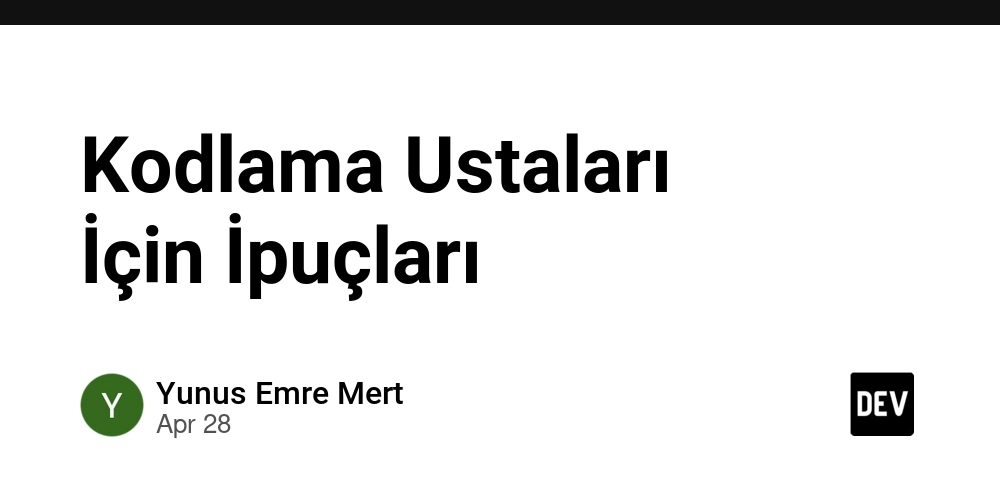Introduction to Data Engineering Concepts |18| The Power of Dremio in the Modern Lakehouse
Free Resources Free Apache Iceberg Course Free Copy of “Apache Iceberg: The Definitive Guide” Free Copy of “Apache Polaris: The Definitive Guide” 2025 Apache Iceberg Architecture Guide How to Join the Iceberg Community Iceberg Lakehouse Engineering Video Playlist Ultimate Apache Iceberg Resource Guide As organizations shift toward data lakehouse architectures, the question isn’t just how to store massive volumes of data—it’s how to optimize it for fast, reliable access without adding complexity or operational overhead. Dremio addresses this challenge head-on by combining performance, governance, and openness into a platform built natively on Apache Iceberg, Apache Arrow, and Apache Polaris. In this final post of our series, we’ll explore how Dremio ties together the technologies we've discussed—like clustering, reflections, and cataloging—into an integrated solution for modern data engineering. We’ll cover what makes Dremio unique, how its latest innovations like Iceberg Clustering and Autonomous Reflections work, and why these capabilities are a breakthrough for data teams aiming to do more with less. Built for the Modern Stack Dremio isn't just a SQL engine—it’s a full data platform built for the lakehouse era. It operates directly on data stored in open formats like Parquet and Iceberg, using Apache Arrow for in-memory performance and Apache Polaris for metadata management and governance. The result is a platform that offers sub-second queries, native support for open standards, and a unified experience across ingestion, transformation, exploration, and security. Instead of requiring teams to move data into a proprietary warehouse, Dremio enables query federation across lakes, catalogs, and traditional databases. Whether your data lives in S3, GCS, Azure, or multiple warehouses, Dremio can connect, query, and govern it—all without duplication or data movement. But what truly sets Dremio apart is its focus on intelligent automation and data layout optimization. Let’s break down how these features work. Iceberg Clustering: Smarter Data Organization As datasets grow, traditional partitioning strategies fall short. Over-partitioning leads to a flood of small files. Under-partitioning causes massive scan overhead. Dremio introduces Iceberg Clustering to address this gap. Instead of dividing data into rigid partitions, clustering organizes rows based on column value proximity using Z-ordering, a type of space-filling curve. This technique braids together bits from multiple columns to form an index that preserves locality. The closer the index values, the closer the original rows were in value space—making it easier for the engine to skip irrelevant data. By clustering non-partitioned tables, Dremio can dramatically reduce the number of data files and row groups scanned during queries. The result: faster performance without the rigidity or complexity of traditional partitioning. This process is incremental and adaptive. Dremio monitors data file overlap (measured via clustering depth) and selectively rewrites files to restore efficient layout. You don’t have to re-cluster everything or worry about perfect partition granularity—Dremio handles it dynamically and intelligently. Autonomous Reflections: AI for Query Optimization Materialized views are great—until you have to decide which ones to create, maintain, and drop. Dremio automates this process with Autonomous Reflections, which monitor your workloads, identify performance bottlenecks, and generate pre-aggregated or pre-filtered views to accelerate queries. The system analyzes usage patterns and query plans, scores potential reflections based on estimated time savings, and creates only those that deliver meaningful impact. It even keeps them up to date using live metadata refresh and incremental updates, ensuring performance gains without sacrificing freshness. Reflections are created, scored, and dropped automatically based on cost-benefit analysis, with strict guardrails to avoid wasting resources. This isn’t just automation—it’s intelligent, usage-aware optimization. With Dremio’s Autonomous Reflections, query acceleration becomes invisible to the user. Queries run faster, dashboards load quicker, and teams no longer need to guess which workloads justify a materialized view. The platform adapts as your usage changes. Governance and Discoverability with Polaris Managing Iceberg tables at scale requires more than just metadata tracking—it requires unified governance. Dremio’s integration with Apache Polaris gives teams a central catalog that enforces access controls, tracks lineage, and supports multi-engine access through open REST protocols. Whether you’re using Spark, Trino, Flink, or Dremio itself, Polaris provides a consistent layer for managing catalogs, namespaces, and Iceberg tables. Service principals and RBAC ensure secure access, while credential vending allows

Free Resources
- Free Apache Iceberg Course
- Free Copy of “Apache Iceberg: The Definitive Guide”
- Free Copy of “Apache Polaris: The Definitive Guide”
- 2025 Apache Iceberg Architecture Guide
- How to Join the Iceberg Community
- Iceberg Lakehouse Engineering Video Playlist
- Ultimate Apache Iceberg Resource Guide
As organizations shift toward data lakehouse architectures, the question isn’t just how to store massive volumes of data—it’s how to optimize it for fast, reliable access without adding complexity or operational overhead. Dremio addresses this challenge head-on by combining performance, governance, and openness into a platform built natively on Apache Iceberg, Apache Arrow, and Apache Polaris.
In this final post of our series, we’ll explore how Dremio ties together the technologies we've discussed—like clustering, reflections, and cataloging—into an integrated solution for modern data engineering. We’ll cover what makes Dremio unique, how its latest innovations like Iceberg Clustering and Autonomous Reflections work, and why these capabilities are a breakthrough for data teams aiming to do more with less.
Built for the Modern Stack
Dremio isn't just a SQL engine—it’s a full data platform built for the lakehouse era. It operates directly on data stored in open formats like Parquet and Iceberg, using Apache Arrow for in-memory performance and Apache Polaris for metadata management and governance. The result is a platform that offers sub-second queries, native support for open standards, and a unified experience across ingestion, transformation, exploration, and security.
Instead of requiring teams to move data into a proprietary warehouse, Dremio enables query federation across lakes, catalogs, and traditional databases. Whether your data lives in S3, GCS, Azure, or multiple warehouses, Dremio can connect, query, and govern it—all without duplication or data movement.
But what truly sets Dremio apart is its focus on intelligent automation and data layout optimization. Let’s break down how these features work.
Iceberg Clustering: Smarter Data Organization
As datasets grow, traditional partitioning strategies fall short. Over-partitioning leads to a flood of small files. Under-partitioning causes massive scan overhead. Dremio introduces Iceberg Clustering to address this gap.
Instead of dividing data into rigid partitions, clustering organizes rows based on column value proximity using Z-ordering, a type of space-filling curve. This technique braids together bits from multiple columns to form an index that preserves locality. The closer the index values, the closer the original rows were in value space—making it easier for the engine to skip irrelevant data.
By clustering non-partitioned tables, Dremio can dramatically reduce the number of data files and row groups scanned during queries. The result: faster performance without the rigidity or complexity of traditional partitioning.
This process is incremental and adaptive. Dremio monitors data file overlap (measured via clustering depth) and selectively rewrites files to restore efficient layout. You don’t have to re-cluster everything or worry about perfect partition granularity—Dremio handles it dynamically and intelligently.
Autonomous Reflections: AI for Query Optimization
Materialized views are great—until you have to decide which ones to create, maintain, and drop. Dremio automates this process with Autonomous Reflections, which monitor your workloads, identify performance bottlenecks, and generate pre-aggregated or pre-filtered views to accelerate queries.
The system analyzes usage patterns and query plans, scores potential reflections based on estimated time savings, and creates only those that deliver meaningful impact. It even keeps them up to date using live metadata refresh and incremental updates, ensuring performance gains without sacrificing freshness.
Reflections are created, scored, and dropped automatically based on cost-benefit analysis, with strict guardrails to avoid wasting resources. This isn’t just automation—it’s intelligent, usage-aware optimization.
With Dremio’s Autonomous Reflections, query acceleration becomes invisible to the user. Queries run faster, dashboards load quicker, and teams no longer need to guess which workloads justify a materialized view. The platform adapts as your usage changes.
Governance and Discoverability with Polaris
Managing Iceberg tables at scale requires more than just metadata tracking—it requires unified governance. Dremio’s integration with Apache Polaris gives teams a central catalog that enforces access controls, tracks lineage, and supports multi-engine access through open REST protocols.
Whether you’re using Spark, Trino, Flink, or Dremio itself, Polaris provides a consistent layer for managing catalogs, namespaces, and Iceberg tables. Service principals and RBAC ensure secure access, while credential vending allows query engines to read data without exposing cloud credentials.
By offering a unified metastore for all your Iceberg assets, Polaris makes it easier to scale governance and integrate with diverse compute engines, all while maintaining data sovereignty and visibility.
AI-Ready Data, Out of the Box
As data volumes soar and AI workloads increase, organizations need data platforms that deliver speed and clarity—not maintenance overhead. Dremio’s new features don’t just optimize query performance; they also support AI and analytics with intelligent automation, semantic search, and unified metadata.
AI-Enabled Semantic Search lets users discover datasets using plain language, not SQL. This reduces time spent hunting for data and accelerates exploration for analysts and data scientists alike. Combined with reflections and clustering, the platform ensures these queries return results fast.
And because Dremio is built on open standards—Iceberg, Arrow, and Polaris—you can trust that your data architecture will remain portable, interoperable, and vendor-neutral.
Real-World Results
Dremio has already demonstrated the power of this approach internally. After deploying clustering and autonomous reflections across its own internal lakehouse, Dremio saw:
- 80% of dashboards accelerated automatically
- 10x reduction in 90th percentile query times
- 30x improvement in CPU efficiency per query
- Substantial infrastructure savings by right-sizing compute resources
These improvements weren’t the result of hand-tuning or custom engineering. They were achieved through intelligent automation—something every team can now access.
Conclusion
Data lakehouses offer unmatched flexibility, but performance and manageability have long remained pain points. With features like Iceberg Clustering, Autonomous Reflections, and Polaris Catalog, Dremio turns the lakehouse into a high-performance, governed, and self-optimizing platform.
For data engineers, this means fewer manual interventions, faster time-to-insight, and greater confidence in how data is delivered. For analysts and AI teams, it means sub-second queries and easy access to the data they need—no pipeline delays, no tuning required.
As the final stop in this series, Dremio represents the culmination of modern data engineering principles: openness, automation, and efficiency. If you're building on Iceberg and want to unlock its full potential, Dremio offers a platform designed not just to support your architecture, but to elevate it.
To see it in action, try Dremio for free or explore the latest launch to learn how these capabilities can help your team build a faster, smarter lakehouse.







































































































































































![[The AI Show Episode 145]: OpenAI Releases o3 and o4-mini, AI Is Causing “Quiet Layoffs,” Executive Order on Youth AI Education & GPT-4o’s Controversial Update](https://www.marketingaiinstitute.com/hubfs/ep%20145%20cover.png)

































































































































![From Art School Drop-out to Microsoft Engineer with Shashi Lo [Podcast #170]](https://cdn.hashnode.com/res/hashnode/image/upload/v1746203291209/439bf16b-c820-4fe8-b69e-94d80533b2df.png?#)









































































































(1).jpg?#)






























_Inge_Johnsson-Alamy.jpg?width=1280&auto=webp&quality=80&disable=upscale#)













































































































![Apple Developing AI 'Vibe-Coding' Assistant for Xcode With Anthropic [Report]](https://www.iclarified.com/images/news/97200/97200/97200-640.jpg)
![Apple's New Ads Spotlight Apple Watch for Kids [Video]](https://www.iclarified.com/images/news/97197/97197/97197-640.jpg)







































































![[Weekly funding roundup April 26-May 2] VC inflow continues to remain downcast](https://images.yourstory.com/cs/2/220356402d6d11e9aa979329348d4c3e/WeeklyFundingRoundupNewLogo1-1739546168054.jpg)


























